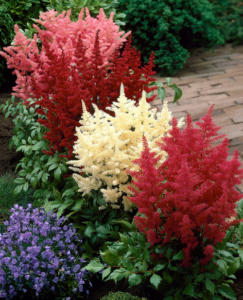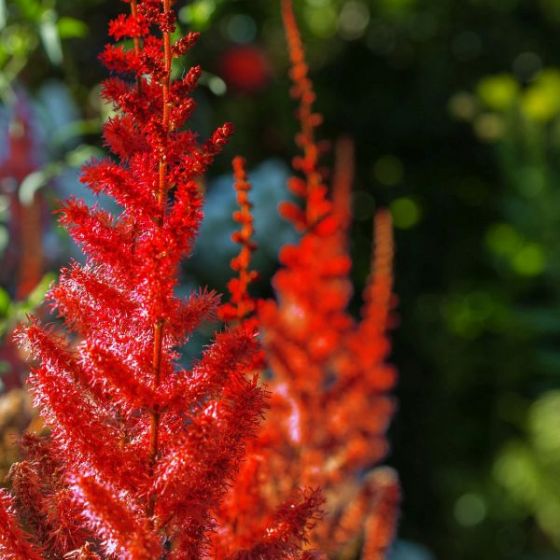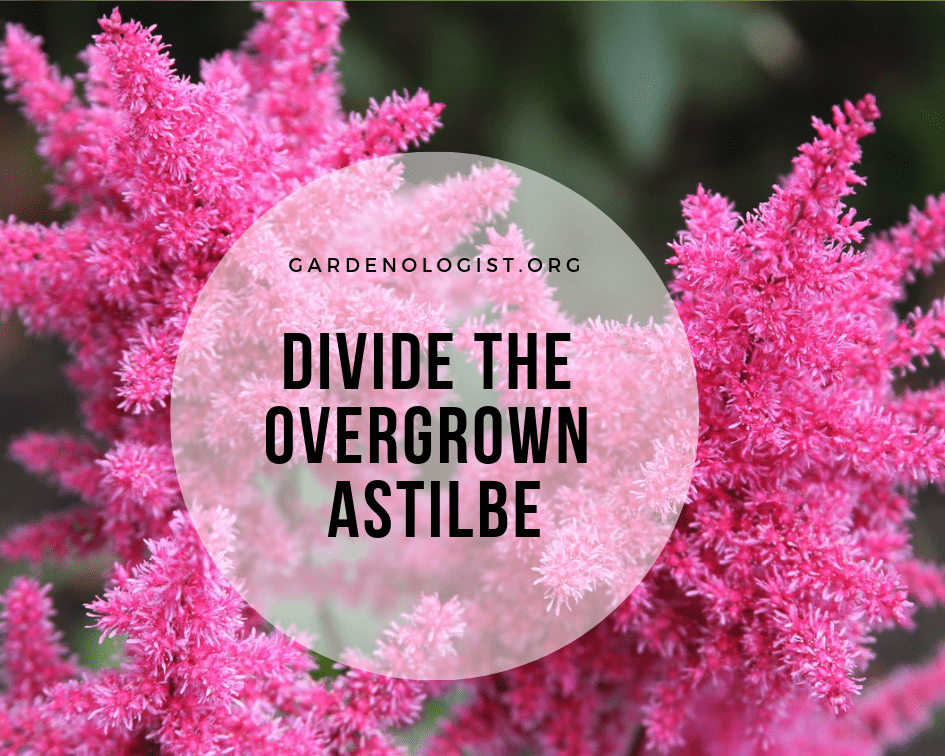This post may contain affiliate links. As an Amazon Associate we earn from qualifying purchases.
Once you learn how to divide astilbe you can fill your garden with this gorgeous plant!
What if we told you that to invigorate that ratty astilbe (Astilbe spp.), you’ll need to dig it up and hack away at the rootball? Sounds scary, doesn’t it? But, that’s exactly what we do when we divide plants and the purpose is both to breathe new life into the plant and to propagate it. Although it may be a bit frightening the first time, it is easy to divide astilbe.

Astilbe (Astilbe spp.)is a perennial plant, popular for its ability to not only grow in the shade, but produce a prolific bouquet of gorgeous blooms. This beauty grows from a rhizome. If you’re new to gardening, you can learn the difference between rhizomes, bulbs, corms, tubers and tuberous roots right here on Gardenologist.org.
If you are a U.S. Department of Agriculture plant hardiness zones 3 through 9 gardener with a moist, shady spot in the garden, you will love astilbe.
They come in a variety of colors — and if you have a garden spot that could use a shot of vibrant red, check out our favorite, the Visions in Red astilbe, available at NatureHills.com.

If you already grow astilbe, and yours isn’t performing as it should or it’s looking a bit faded, it’s time to divide it. The best time to do so? Early spring.
What you’ll need to divide astilbe
Gather up the necessary equipment to divide the astilbe and let’s get started.
- Shovel or sharp garden spade
- Pruning shears
- Pruning saw
- Household disinfectant
- Mulch
Preparing to divide astilbe
Dividing any plant requires careful preparation. First, decide where you’ll plant the new astilbes and water that area deeply (moisten at least the top 5 inches of soil) the day before you will be dividing the plant.
Water the mother plant as well. Clean and disinfect your equipment (shovel, pruners and saw) in a solution of three parts of water and one-part household disinfectant, such as Pine Sol, Lysol or Zep. Follow the label instructions, then rinse with water. Allow them to air dry.
Let’s dig it up
Dig a planting hole in the area where you’ve decided to plant the division. Make it as deep as the plant is currently growing and twice the diameter of the plant.
Now, it’s time to dig up the astilbe. Insert the spade’s head as deep as possible at the astilbe’s dripline. Remove the spade and repeat the process next to the first insertion and keep repeating until you’ve encircled the plant. Then, gently pry the plant from the ground with the spade. Gently shake the soil from the roots.
Divide the astilbe
Use the pruning shears to cut the astilbe’s stems to within 3 inches of the rootball, then, use the saw or a sharp knife to cut down the middle of the rootball. Use your hands to pull it apart. By the way, if you need pruners, one of our favorites is frequently on sale at Amazon. You’ll find it here (and check out the reviews!)
Plant one of the clumps into the prepared hole and the other in the original hole. Fill both halfway with soil, then fill them with water and wait for it to drain. This allows the soil to settle and removes air pockets. Now, finish filling the holes with soil.
Apply a layer of mulch around each astilbe, keeping it at least 3 inches from the base of the plant. The mulch will help keep the soil moist.
Water both plants slowly and keep the soil moist (not saturated) while they become established. With these plants, mulching is important, especially if they are planted where they will get some direct sun. Bark chips or any other good moisture-retaining top mulch will be very helpful in maintaining the constantly-moist soil they prefer.
You can divide astilbe every year but don’t wait any longer than three years.




